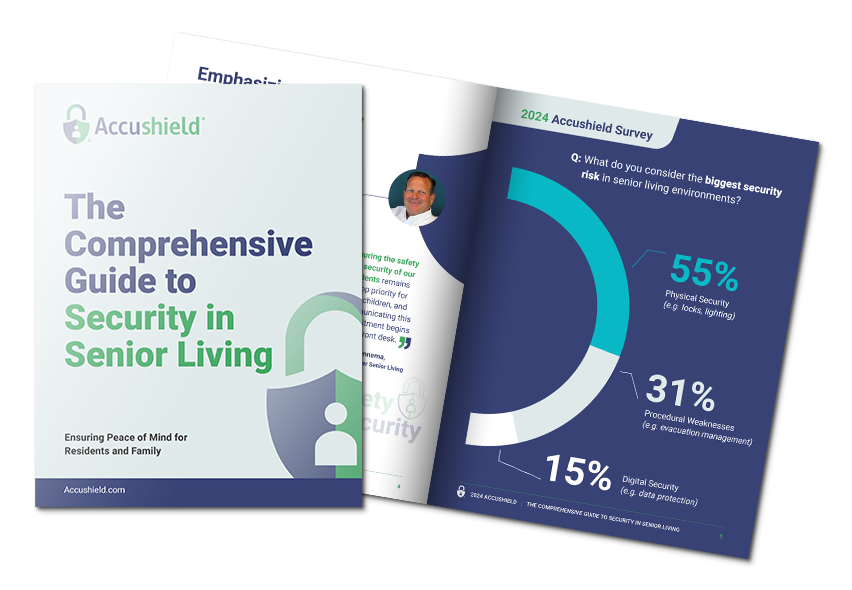Senior living communities hold the critical responsibility of ensuring a safe and secure environment for their vulnerable residents. In an age where security concerns are increasingly paramount, these communities are constantly seeking methods to safeguard their residents from potential harm. A significant step towards bolstering safety measures involves the meticulous checking-in of outside caregivers and vendors. Implementing a system that requires these individuals to present a driver’s license upon entry can significantly enhance the security protocols within senior living settings. Furthermore, the use of adhesive name badges that display the time of check-in and a photo of the vendor or service provider amplifies this security measure. Utilizing a tablet-based kiosk system, such as Accushield, can streamline this process, ensuring efficiency without compromising on safety. Here’s why senior living communities should consider these measures:
1. Verification and Accountability
By requiring a driver’s license at check-in, communities can verify the identity of outside caregivers and vendors, ensuring that only authorized individuals gain access. This step serves as a first line of defense against potential impersonation or unauthorized entry, greatly reducing security risks. The process creates a traceable record of who is entering the facility, their purpose, and their duration of stay, establishing a system of accountability.
2. Enhanced Security
The addition of adhesive name badges with the check-in time, and a photo further enhances security by making it easy for staff and residents to identify authorized visitors at a glance. This visibility acts as a deterrent against nefarious activities, as unauthorized or suspicious individuals can be quickly spotted and questioned. Moreover, in the event of an incident, the ability to identify and track visitor movement within the facility is invaluable for investigative purposes.
3. Reassurance for Residents and Families
The knowledge that every third-party care provider and vendor entering the facility undergoes a thorough check-in process provides peace of mind to residents and their families. This reassurance is crucial, as trust in the facility’s ability to provide a safe environment is a primary concern for prospective and current residents alike. It underscores the community’s commitment to prioritizing resident safety above all.
4. Operational Efficiency
Implementing a tablet-based kiosk system like Accushield for the check-in process ensures that these security measures do not become a bottleneck or hinder the day-to-day operations. Such systems can quickly scan a driver’s license, capture a photo, print an adhesive badge, and log the entry within seconds. This efficiency ensures that caregivers and vendors can promptly begin their work without significant delays, maintaining the facility’s operational flow.
5. Compliance and Legal Protection
Adhering to rigorous check-in procedures can also aid in compliance with state and federal regulations regarding senior living facilities. It demonstrates a proactive approach to risk management, potentially reducing liability in the event of an incident. Documentation of every individual’s entry and exit times can be critical in legal scenarios, providing clear evidence of the facility’s due diligence in maintaining security.
Implementation Consideration
Implementing such a system requires thoughtful consideration, particularly in training staff to use the technology and ensuring the privacy of all individuals involved. The investment in a system like Accushield pays dividends in the form of enhanced safety and security, making it a wise choice for communities dedicated to the well-being of their residents.
Conclusion
The decision to implement stringent check-in procedures, including the scanning of driver’s licenses and the issuance of photo-equipped adhesive badges, reflects a senior living community’s dedication to security. Utilizing a tablet-based kiosk system to facilitate these measures ensures that the process remains quick and efficient, minimizing disruption while maximizing safety. As senior living communities continue to navigate the challenges of providing a secure environment for their residents, adopting such technologies and practices is a clear step in the right direction.
